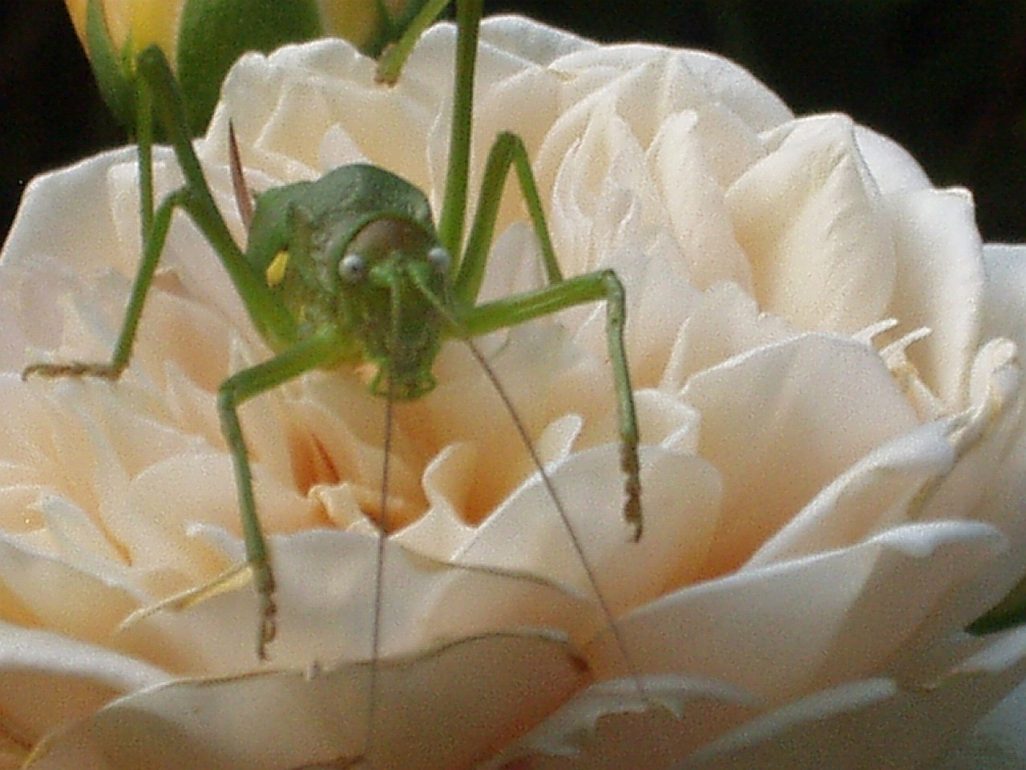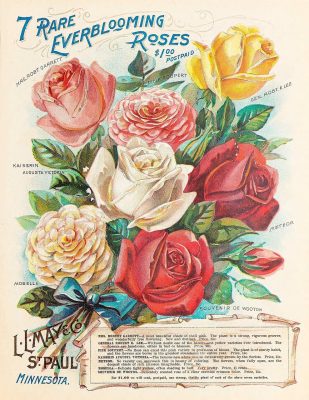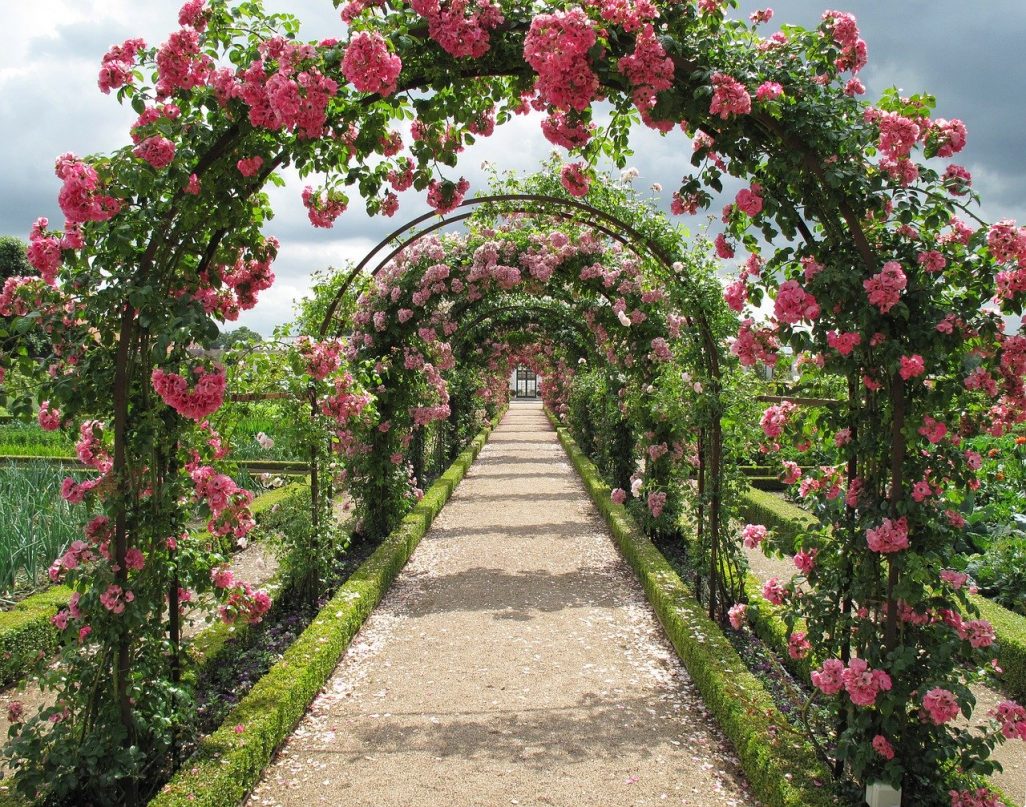
“But he that dares not grasp the thorn, should never crave the rose.”
Anne Brontë
There is no need to introduce such a well-known and much-loved plant as the rose. Roses are a universal symbol of love and adoration. We all love these beautiful flowers.
What do wild roses look like?
Description:
Wild roses grow in every hedgerow. But they are a much humbler breed than those elegant creations of plant breeder’s designs. Most of the 150 species of wild roses are shrubs and climbers with fragile, 5-petaled flowers ranging from white to rose or magenta. They protect a profusion of yellow stamens in their centre.
Cultivated varieties bear little resemblance to their wild cousins. They come in all forms, colours and sizes – large or small, packed or single-flowered, scented or unscented, and in almost every shade of colour, from burgundy red (almost black) to pink, yellow and white.
Some wild rose shrubs grow to only 80 cm, others climb up to 30m high, scrambling over other plants and trees. They are prickly fellows, and while their thorns are often much finer than those of the hybrids, they are no less sharp.
The leaves are usually pinnate with stalked, ovate leaflets, and finely toothed margins. Both stems and leaves bear thorns.
In autumn, they form bright red, pear-shaped fruit, the rose hips, a rich source of vitamin C. The tough outer skin protects a mass of stone-hard triangular seeds embedded in a cosy nest of scratchy fluff that fills the hollow. Children use it as ‘itching powder’.
Ecology:
Wild roses grow in hedgerows, open woodland, fields, heaths, dunes and sandy soil. Their bendy, thorn-covered bows provide protective shelter for small animals – a habitat with a built-in security system.
As a hedgerow species, they provide winter nourishment for birds, field mice and other small critters.
The rose hips turn red in late September, but they can still be seen adorning bare branches in the middle of winter. They are not a snack fruit, but their rich vitamin C content makes them extremely valuable.
Where do wild roses grow naturally?
Distribution:
Wild roses occur naturally throughout the temperate regions of the Northern Hemisphere, from China to North America, but Asia can boast the greatest diversity of species and varieties.
 History & Mythology
History & Mythology
Roses are universally famous as a symbol of love. Pride of place takes the ancient cultivar Rosa gallica, a deep red, fragrant flower, also known as ‘Provins Rose’. (Provins, a small town near Paris, France, was once a centre of Rose cultivation and trade, not to be confused with ‘Provence’, a region of southern France famous for vast Lavender fields).
Rose Cultivation
It is not entirely clear why the humble rose has long inspired horticultural passions. But roses have been under cultivation since at least 3000 BC, making it difficult to trace the exact family tree of specific varieties (at least, until genetics came to the rescue). Roses were among the first plants (if not THE first plant) grown for their beauty’s sake alone. Rose cultivation quickly became a passion, flourishing in Asia and the Middle East long before Rose cultivation became popular in Europe.
Rose Symbolism – Love, Life, Death and Rebirth
In the Middle East, a garden encircled by fragrant roses was the image of sanctity. It represented the Garden of Eden itself. Roses were everywhere, adorning patios and palatial pleasure gardens as a floral symbol of female virtue. Far less virtuous, in Ancient Greece, Roses were an emblem of Aphrodite, the Goddess of Love. According to legend, roses sprang from her tears and mingled with the blood of her dying lover Adonis. But the same story is told about the Scarlet Pheasant’s Eye (Adonis annua). But given its ancient association with various funeral cults, Rose is the more likely candidate.
The Rose is still a symbol of eternal love beyond the grave. It also has long been seen to signify the approach of death, and the ‘rose garden’ is a fitting image of the ‘final resting place’. This symbolism echoes in fairy tales like Sleeping Beauty, who succumbs to a ‘magical sleep’ after pricking herself with the spindle. Climbing roses overtake the entire castle, and everyone within it is engulfed by the impenetrable mass of thorny climbers. Until love brings her back to life when a beautiful young prince cuts through the rambling roses.
Ancient myths often intertwine the symbolism of the closely related themes of life, love, and death. The red Rose signifies blood, the conduit of life itself. But, in dualistic philosophies, life and death are mutually exclusive opposites rather than different phases of a cyclic process that comprises both. Love engenders life, and life engenders death. In this view, death is a stage of transformation, decomposing and recomposing. The soul rejuvenates and returns to life when love calls.
Since the earliest times, Arab Alchemists knew the secrets of this beautiful flower, and they included its scent in their seductive perfumes, potions and lotions.
Essential Oil of Rose
The Damask Rose, a crossing of Rosa gallica with either Rosa phoenicia or Rosa moschata, is the source of Rose Otto, the highly prized perfumer’s gold.
(The term ‘Otto’ derives from ‘Attar’, the Western phonetic rendering of the Arab root ‘itr’ – meaning ‘essence’).
‘Rose Otto’ means ‘rose essence’, and implies steam-distilled essential oil of roses, never solvent-extracted Rose Absolute. The art of distillation is ancient and is usually attributed to Avicenna, who lived in the 10th century. But it is far older. Residues of essential oils have even been found in the tombs of the Pharaohs, and in pre-historic alembic stills dating back thousands of years.
Perhaps the oldest method of oil extraction is enfleurage. In this method, fragrant flowers are macerated in a layer of fatty oil, which gradually extracts the essential oil until the flowers are spent.
Another story claims that rose oil was discovered by a happy, romantic accident: To prepare for the wedding celebrations of the Mogul Djihanguyr and Princess Nour Djihan, the canals in the palace gardens were flooded with rose petals. When Djihanguyr and Nour Djihan took a barge and went for a pleasure ride, they were enveloped by the enchanting fragrance of rose. Nour Djihan let her hand sink into the water and noticed an oily substance floating on the surface. The sun’s heat had released the essential oils from millions of rose petals until it formed a thin layer on the water’s surface.

In those ancient days, the ladies were crazy for the warm, heady, sweetly spiced scent of Roses. The sensual scent has always been touted as an aphrodisiac. Even Cleopatra exploited its seductive power in her pursuit of Mark Antony. She filled her bedroom with a carpet of rose petals 2 ft deep, and the rest is history.
Roman Love of Roses
The Romans are famous for their lavish (some would say ‘wasteful’) use of rose petals. They showered returning warriors with Rose petal confetti and flooded their banquets, floors and beds with fragrant petals. Rose petals were one of the original ‘strewing herbs’.
The Romans were so obsessed with their roses that they ripped out the fruit orchards to make way for cultivating roses. Rosa gallica – the highly fragrant ‘Apothecary’s Rose’ is among the oldest cultivars.
Rose gallica soon spread throughout Europe, probably with the Romans. But it could easily have been lost and forgotten if the 10th-century Crusaders had not rediscovered their charms on excursions to the Holy Land and brought them back as souvenirs.
Medieval monks grew them in their monastery gardens and cared for them devotedly. They tried their best to transform this most sensual of flowers, an emblem of female sexuality and love, into a chaste Christian symbol of pure love embodied by the Virgin Mary. But, much to their dismay, the Rose has never lost its romantic connotations.
The Tudor Rose
By the 15th century, the Rose had risen to royal status as a dynastic symbol. The emblematic Tudor Rose, with white petals in the centre representing the House of York and red outer petals representing the House of Lancaster, served as a unifying symbol after the two parties settled their rivalry in ‘the War of the Roses’.
Despite scores of horticulturist’s attempts to create a rose that would bear both red and white petals, none have succeeded. The Tudor Rose remains an idealised image and remains a horticultural fantasy.
All things ‘Rose and Beautiful’ became a popular obsession, and rose cultivation took off. Even the apothecaries developed a Rose cult and invented an entire pharmacopoeia based on them.
Traditional uses of Rose petals and Rose Essential oil
John Gerard, the famous British Herbalist writing in the 15th century, filled 13 pages of his Herball praising their virtues. Rose petal tea, syrup, jelly and preserves, powders, pomades, pastilles and electuaries, liqueur, tonic wine, honey, rosewater, and oil were all part of the repertoire. Most of these uses have been forgotten, and today, roses are rarely employed medicinally except as a flavouring agent to sweeten medicines and in aromatherapy.
But in cosmetics, it is a different story. Rose essence is as popular as ever in perfumery and a fragrance ingredient for myriad body care products.
In traditional folk medicine, Roses are used according to the doctrine of ‘like cures like’: as a styptic to stop bleeding, and to soothe inflammation and burns.
Follow this link to learn how Roses and their hips can be used medicinally.


